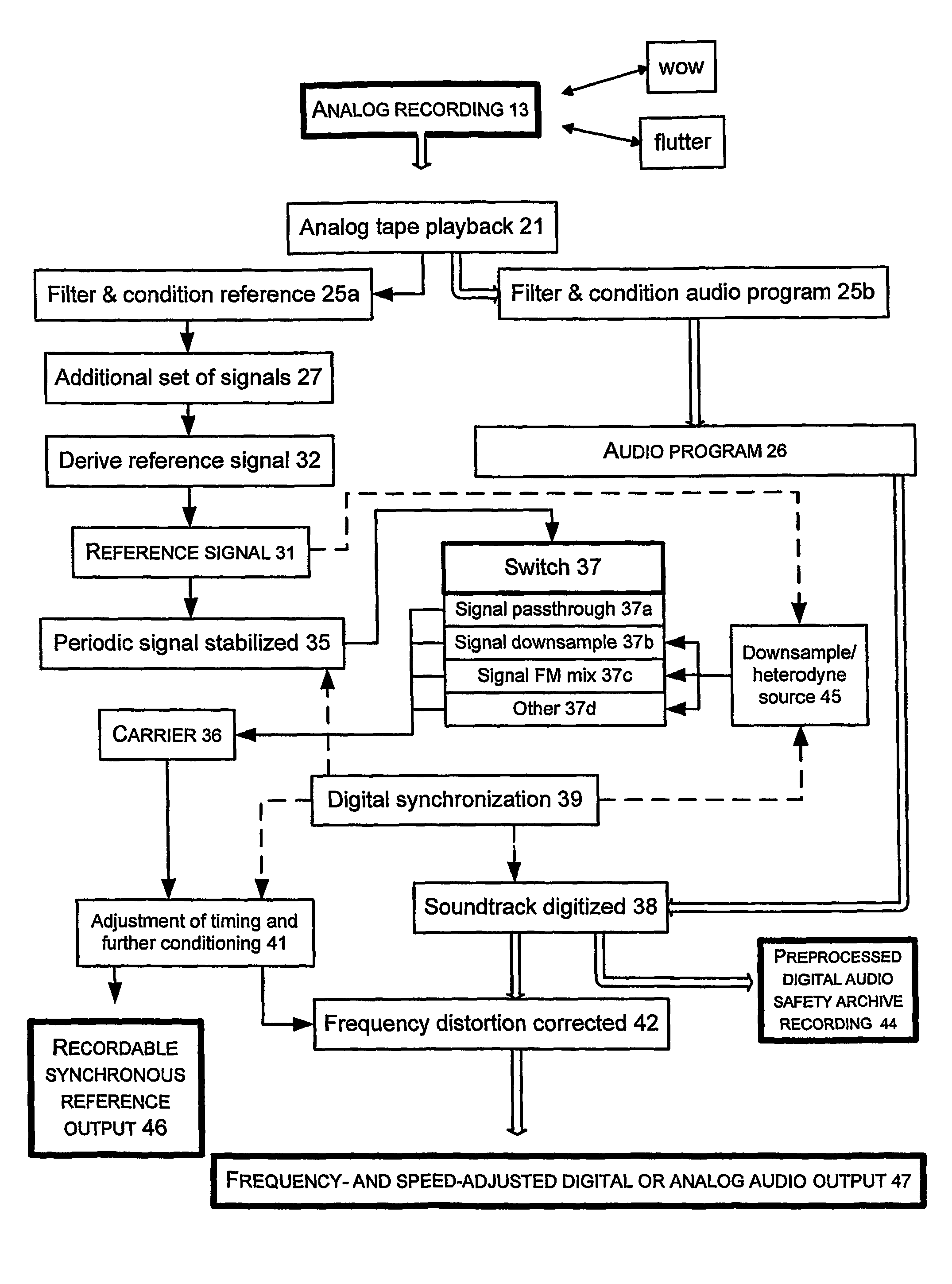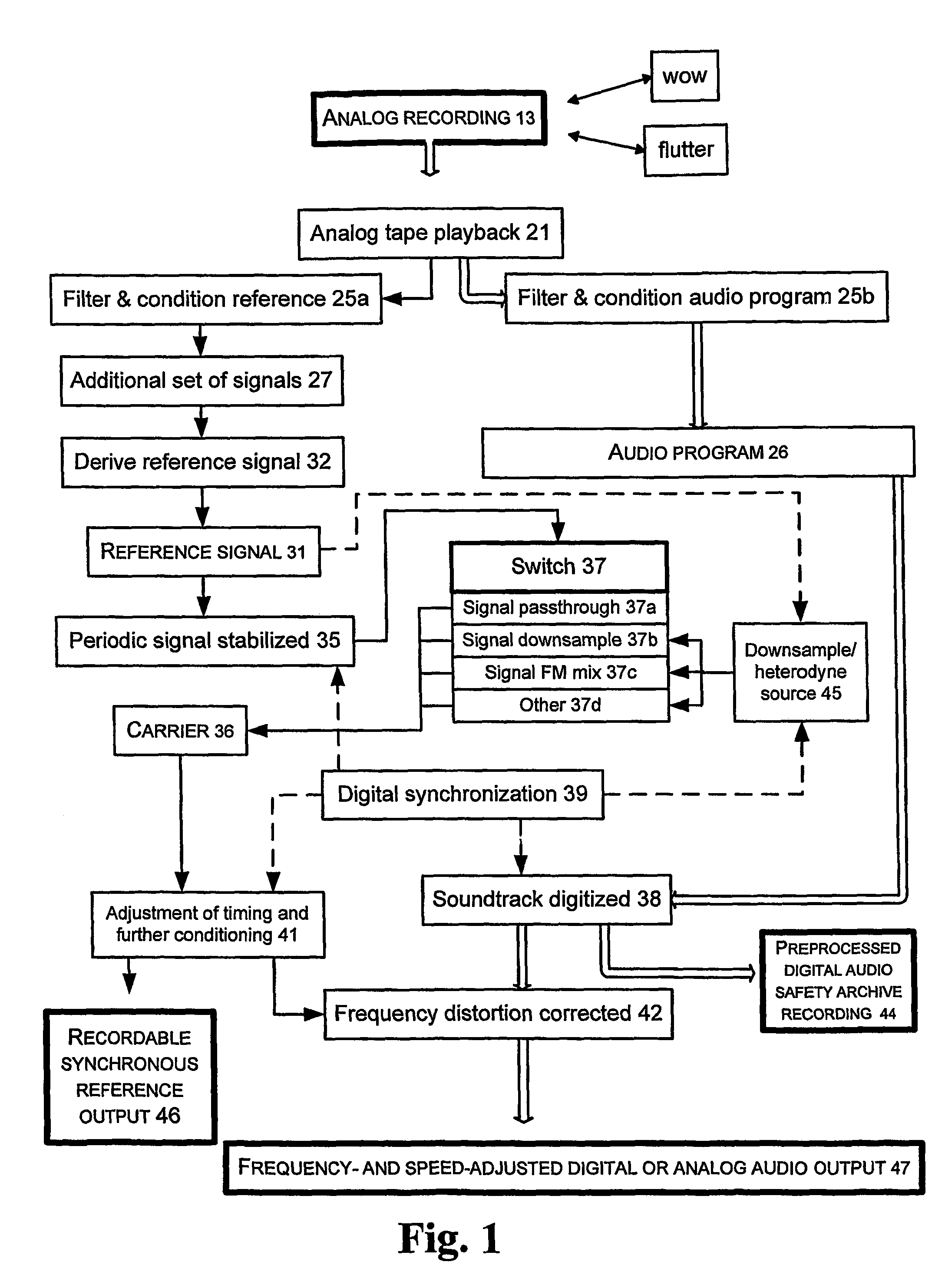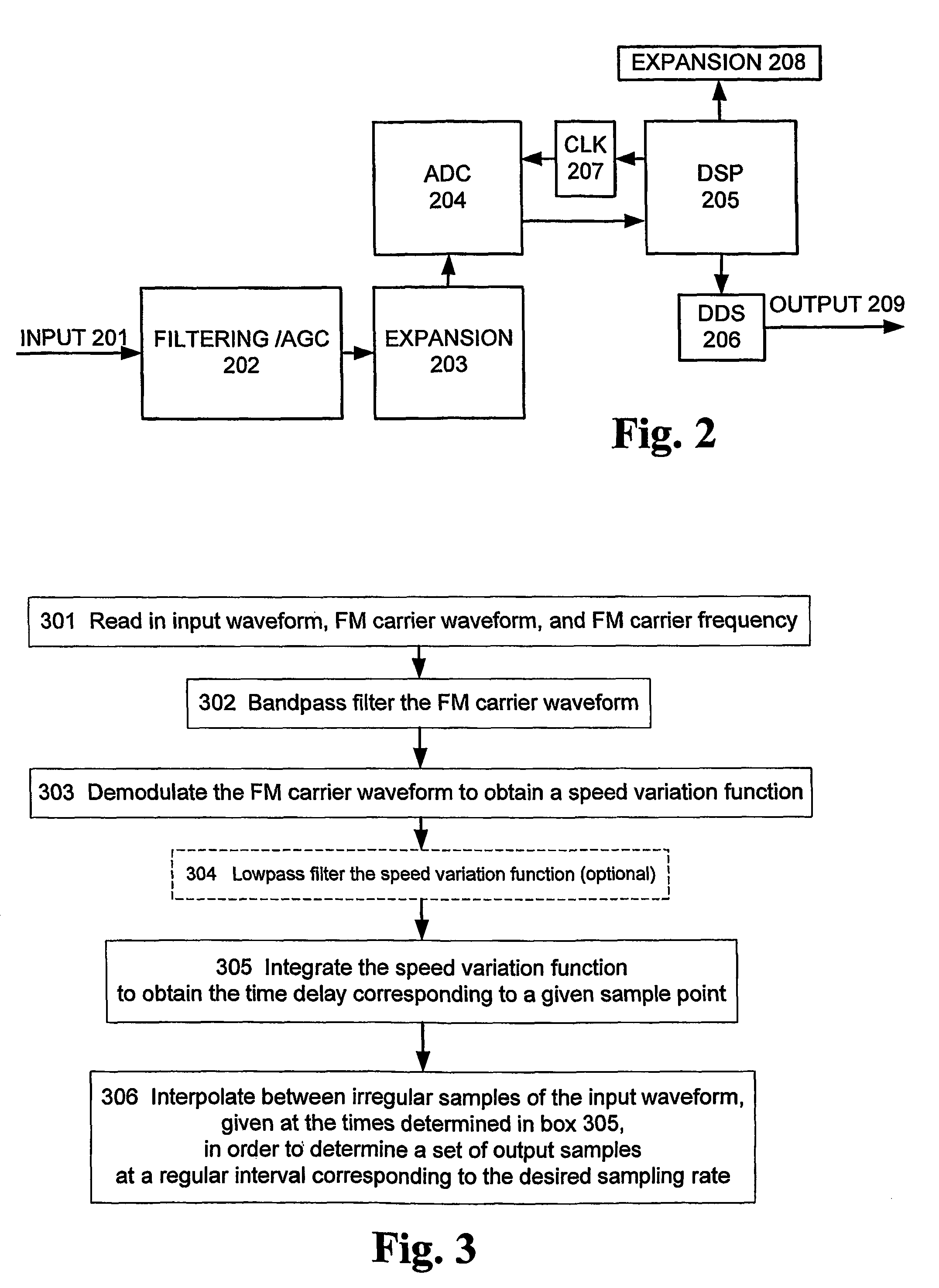Corrective adjustment of recording characteristics in digital renditions of analog recordings
- Summary
- Abstract
- Description
- Claims
- Application Information
AI Technical Summary
Benefits of technology
Problems solved by technology
Method used
Image
Examples
Embodiment Construction
A. Overall System
[0034]FIG. 1 is a block diagram showing an overall view of an implementation of the present invention. It is to be understood that this diagram shows steps and apparatus which may be performed in carrying out a particular embodiment thereof. Other steps and apparatus may alternatively be adopted in performing the invention, for example, processing a digital signal entirely via software.
[0035]A user of the invention begins with an analog recording 13, for example, a tape recording, that exhibits frequency modulation which may be characterized as wow / flutter. The analog recording may include one or more tracks, e.g. for stereophonic or surround sound. The wow / flutter is present because the recording process was subject to mechanical variations which affect the speed of tape or other recording medium past a recording element, e.g. tape head. One aspect of the invention takes advantage of the fact that the bias and record signals typically go hand in hand, and thus are ...
PUM
| Property | Measurement | Unit |
|---|---|---|
| frequency | aaaaa | aaaaa |
| frequency | aaaaa | aaaaa |
| frequency | aaaaa | aaaaa |
Abstract
Description
Claims
Application Information
 Login to View More
Login to View More - R&D
- Intellectual Property
- Life Sciences
- Materials
- Tech Scout
- Unparalleled Data Quality
- Higher Quality Content
- 60% Fewer Hallucinations
Browse by: Latest US Patents, China's latest patents, Technical Efficacy Thesaurus, Application Domain, Technology Topic, Popular Technical Reports.
© 2025 PatSnap. All rights reserved.Legal|Privacy policy|Modern Slavery Act Transparency Statement|Sitemap|About US| Contact US: help@patsnap.com



